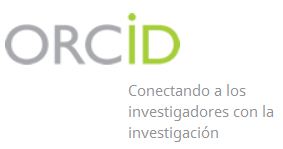Speech therapy in pediatric patients with Autism Spectrum Disorder
Keywords:
language, autism spectrum disorders, logotherapyAbstract
Introduction: In pediatric patients with autism spectrum disorder there are clinical characteristics that affect the development of language and communication. In the care of this neuropsychiatric disorder, logotherapy is included due to the implications of the manifest deficit in social communication.
Objectives: to evaluate the effects of logotherapy on the development of language and communication in pediatric with autism spectrum disorder treated at the Child neurology Clinic of the International Center for Neurological Restoration.
Methods: An longitudinal, retrospective, quasi-experimental therapeutic intervention, was carried out in a sample of 27 pediatric patients with autism spectrum disorder. The selection took into account the review of medical records and speech therapy files, contrasted with the results of the external diagnosis, the application of speech therapy, the initial and final evaluation with the Evaluation Scale of Oral Expression and Pronunciation (prelinguistic and linguistic stage). Percentage calculation and the non-parametric Wilcoxon test were used for data analysis.Results: male sex predominated (67,8 %), stay of 2 cycles (56 days) of treatment (64,3 %), age range 4 to 7 years (60,7 %), clinical diagnosis of autism spectrum disorders (100 %) and speech therapy of language regression (85,7 %). Improvements were found in the parameters evaluated, for the vocalizations (52.9 %), first words (47.1 %), isolated words (61.3 %), simple sentences (59 %), lexical-grammatical aspect (54.5 %), narration (41 %) and pronunciation (25 %).
Conclusions: Speech therapy positively influences the development of language and communication in pediatric with autism spectrum disorders.
Downloads
References
2. Barthélémy C, Fuentes J, Howlin P, Gaag R. Personas con trastorno del espectro del autismo. Identificación, comprensión, intervención. Autismo-Europa; 2019 [acceso: 15/04/2022]. Disponible en: https://scholar.google.es/scholar?hl=es&as_sdt=0%2C5&q=personas+con+trastorno+del+espectro+autista+europa+2019+&btnG=#d=gs_qabs&t=1709395853103&u=%23p%3DPzDxeJH4zUkJ
3. Rodríguez F, Castillo D, Leyva RM, Del Río M, Herrera A. Estrategia de intervención psicoeducativa para familiares de pacientes con trastornos esquizofrénicos. Revista del Hospital Psiquiátrico de la Habana. 2020 [acceso: 15/04/2022]; 17(3):e111. Disponible en: http://revhph.sld.cu/index.php/hph/article/view/111/90
4. Prieto I, Martínez M, Criado JJ, Martínez A. El impacto de la pandemia por COVID-19 en Población Infanto-juvenil española con Trastorno del Espectro Autista y en su familia. Revista de psicología clínica con niños y adolescentes. 2022 [acceso: 18/08/2022]; 9(1):7. Disponible en: https://www.revistapcna.com/sites/default/files/2128.pdf
5. Moliner B. Alteraciones estructurales cerebrales en niños con Trastorno de asperger y su relación con el perfil cognitivo. España: Universidad Jaume I; 2018 [acceso: 18/11/2021]. Disponible en: http://repositori.uji.es/xmlui/bitstream/handle/10234/177235/TFM_2018_MolinerCastellanoBalma.pdf?sequence=1&isAllowed=y
6. Guerra MM, Duarte LM, Arias J. La neuroanatomía y neurofisiología en la comprensión de los trastornos del espectro autista. Revista Cubana de Investigaciones Biomédicas. 2021 [acceso: 28/01/2022]; 40(1):e727. Disponible en: http://www.revibiomedica.sld.cu/index.php/ibi/article/view/727/930
7. Organización Mundial de la Salud. Trastorno del espectro autista. 2019. Disponible en: https://www.who.int/es/news-room/fact-sheets/detail/austim-spectrum-disorders
8. DiStefano C, Shih W, Kaiser A, Landa R, Kasari C. Communication growth in minimally verbal children with ASD: The importance of interaction. AustimResearch. 2016 [acceso: 28/01/2022]; 9 (10): 1093-1102. Disponible en: https://doi.org/10.1002/aur.1594
9. Guanoluisa D, Álvarez AJ, Izurieta LF, Paredes RL. El cuento infantil como estrategia para potenciar el lenguaje en niños con autismo. Revista Educare. 2021 [acceso: 28/01/2022]; 25 (1): 421-437. Disponible en: https://revistas.investigacion-upelipb.com/index.php/educare/article/view/1430
10. Gallardo Martínez IE. Inicio tardío del lenguaje: revisión general. Rev Mex AMCAOF. 2016 [acceso: 17/10/2020]; 5(3):89-96. Disponible en: https://www.mediagraphic.com/cgi-bin/new/resumen.cgi?IDARTICULO=70489
11. Mejías Padilla V. Implicaciones y Efectos Neurológicos en el Desarrollo del Lenguaje. RTED. 2021 [acceso: 24/10/2021]; 10(1): 25-31. Disponible en: https://doi.org-10.37843/rted.v10il.178
12. Sánchez M, Zaldívar M, Pérez N, Marrero NT, Gil EL. Logoterapia en infantes con enfermedades del sistema nervioso central. Revista Cubana de medicina Física y Rehabilitación. 2022 [acceso: 25/10/2022]; 14 82). Disponible en: http://revrehabilitacion.sld.cu
13. Belichon M, Riviere A. El lenguaje autista desde una perspectiva correlacional. Estudios de Psicología. 2017 [acceso: 15/04/2022]. Disponible en: https://doi.org/http://dx.doi.org/10.1174/021093900320320380695
14. Carvalho P. lo que podemos aprender de los autistas: la experiencia clínica de una profesora de educación básica y un estudiante autista. Revista de psicología. 2019 [acceso: 15/04/2022]; 25 (3): 1316-1330. Disponible en: http://dx.doi.org/10.5752/P.1677-1168.2019v25n3p1316-1330
15. Vaiouli P, Andreou G. Communication and Language Development of young children witth austism: a review of research in music. Communication Disorders Quaterly. 2018 [acceso: 30/01/2022]; 39 (2): 323-329. Disponible en: https://doi.org/10.1177/1525740117705117
16. Aguilera Albesa S, Orellana Ayala CE. Trastornos del lenguaje. Pediatr Integral. 2017 [acceso: 30/01/2022]; XXI (1): 15-22. Disponible en: https://www.pediatriaintegral.es/publicacion-2017-01/trastornos-del-lenguaje-2017/
17. Fernández, G, Rodríguez, X. Logopedia (primera parte). Texto para los Estudiantes de las carreras de Licenciatura en Logopedia y Educación Especial. Editorial Pueblo y Educación. La Habana, Cuba, 2012.
18. Casa F, Clavijo H, González-Moreno CX, Jiménez M, Gordo A, casas R, et al. El cuento infantil: facilitador de pensamiento desde una experiencia pedagógica. Praxis y Saber. 2018 [acceso: 30/01/2022]; 1 (2). Disponible en: https://doi.org/10.19053/22160159.3027
19. Bacon EC, Osuma S, Courchesne E, pierceK. Naturalistic language sampling to characterize the langage abilities of 3-years-olds with autism spectrum disorders. Autism. 2019 [acceso: 30/01/2022]; 23 (3): 699-712. Disponible en: https://doi.org/10.1177/13623613118766241
Published
How to Cite
Issue
Section
License
Copyright (c) 2024 Marianne Sánchez Savigñón

This work is licensed under a Creative Commons Attribution-NonCommercial 4.0 International License.





